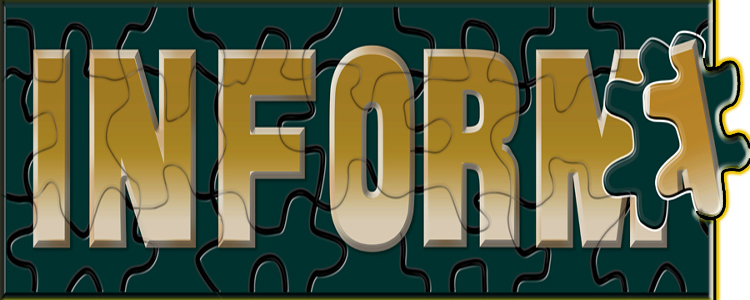Course details
Enterprise Java & ADF developers are in high demand in the IT marketplace ; IT professionals can differentiate themselves from their peers or competition and gain valuable job security by earning a Java EE certification. Expand your knowledge of ADF and related technologies today with comprehensive, expert-led training from INFORM. Simplify application development in your organization to increase productivity. Become more efficient at building Java EE applications using Oracle ADF (innovative yet mature Java EE development framework) and deploy an end-to-end web application. Note that the following is the main topic for EE & ADF course.Objective
Expose the data model in a web application with a rich ADF Faces user interface
Create JSF pages
Use rich client components in JSF pages
Add validation to ADF applications
Secure Web applications
Build and customize a data model by using ADF Business Components
Extend Business Components to support company standards
Provide validation, calculations and LOVs
Dissect and employ essential databinding components
Design application components for reuse
Leverage Expression Language, Managed Beans and Java Server Pages
Enhance an application with Active Data Service and ADF visualization components
Customize the look-and-feel of an application by using skins
Integrate applications with SOA and Web Center
Learn To:
Build end-to-end web applications.
Develop Java EE components with Oracle ADF.
Build rich user interfaces with ADF Faces.
Use the new capabilities of Oracle JDeveloper 11g Release 1 Patch Set 1.
Apply company standards to the data model
Provide Lists of Values (LOV)
Display dynamically changing data
Use skins to control the look-and-feel
Integrate ADF with SOA and WebCenter
Java SE Content
Java EE & ADF Content
Introduction to Fusion and ADF
Describing Fusion architecture
Explaining how ADF fits into the Fusion architecture
Describing the ADF technology stack (MVC)
Getting Started with JDeveloper
Listing JDeveloper benefits for application development
Using the features of the JDeveloper IDE
Defining IDE preferences
Creating applications, projects, and connections in JDeveloper
Building a Data Model with ADF Business Components
Introducing ADF Business Components
Creating Business Components from tables
Testing the data model
Querying and Persisting Data
Using view objects
Using entity objects to persist data
Synchronizing entity objects with database table changes
Creating associations
Creating updateable view objects
Creating master-detail relationships
Refactoring
Exposing Data
Creating application modules
Using master-detail view objects in application modules
Managing Business Components transactions
Abstracting business services with ADF Model
Declaratively Customizing Data Services
Internationalizing the data model
Editing business components
Modifying default behavior of entity objects
Changing the locking behavior of an application module
Programmatically Customizing Data Services
Generating Java classes
Programmatically modifying the behavior of entity objects
Programmatically modifying the behavior of view objects
Adding service methods to an application module
Using client APIs
Validating User Input
Understanding validation options: Database, Data Model, or UI
Triggering validation execution
Handling validation errors
Using Groovy expressions in validation
Using programmatic validation
Using logging and diagnostics
Using the JDeveloper debugger
Understanding UI Technologies
Describing the use of Web browsers and HTML
Describing the function of Servlets and JSPs
Defining JavaServer Faces
Explaining the JSF component architecture and JSF component types
Explaining the purpose of backing beans and managed beans
Describing the JSF life cycle
Explaining how ADF Faces augments the JSF life cycle
Binding UI Components to Data
Creating a JSF page
Adding UI components to a page
Describing the ADF Model layer
Using Expression Language in data bindings
Using a Page Definition file
Examining data binding objects and metadata files
Binding existing components to data
Running and testing the page
Planning the User Interface
Describing the Model-View-Controller design pattern
Differentiating between bounded and unbounded task flows
Creating and converting task flows
Defining control flows
Defining global navigation
Creating routers for conditional navigation
Calling methods and other task flows
Implementing validation in the user interface
Adding Functionality to Pages
Internationalizing the user interface
Using component facets
Displaying tabular data in tables
Displaying hierarchical data in trees
Displaying text or media with icons and images
Defining search forms and display results
Displaying data graphically
Implementing Navigation on Pages
Using ADF Faces navigation components
Using buttons and links
Using menus for navigation
Using breadcrumbs
Using a train component
Achieving the Required Layout
Using complex layout components
Explaining how to use ADF Faces skins
Using dynamic page layout
Ensuring Reusability
Designing for reuse
Using task flow templates
Creating and using page templates
Creating and using declarative components
Creating and using page fragments
Deciding which type of reusable component to use
Passing Values Between UI Elements
Defining the data model to reduce the need to pass values
Using a managed bean to hold values
Using page parameters
Using task flow parameters
Passing values from containing pages to regions
Responding to Application Events
Using managed beans
Coordinating JSF and ADF lifecycles
Using phase and event listeners
Using action listeners and methods
Understanding additional AJAX events
Implementing Transactional Capabilities
Updated on 15 January, 2024
Job roles this course is suitable for:
Data Warehouse Developer , Master Data Administrator , Manager IT Project Management , Manager - IT InfrastructureCourse Location
About INFORM
INFORM provise Training Services, Software Solutions & Consultations, and Outsourcing ServicesWe are one of the world’s leading providers of training, information and knowledge on standards, management systems, business improvement and the achievement of regulatory approval for products.
INFORM واحدة من رواد فى مجال تكنولوجيا المعلومات تضم فريق متميز لتقديم خدمات تكنولوجيا المعلومات, وحلول لتطوير انظمة الشركات والقيام بعمل انظمة خاصة متكاملة تسمح بزيادة كفاءة وسرعة الاتصال لتنسيق جميع الموارد والمعلومات See all INFORM courses
- JavaScript Full stack web developer virtual internship Virtual Bootcamp + Internship at LaimoonAED 1,449Duration: Upto 30 Hours
- Web Development (20 In 1) NextGen LearningEGP 5,784Duration: Upto 30 Hours
- Web Design and Development NextGen LearningEGP 2,563Duration: Upto 20 Hours

